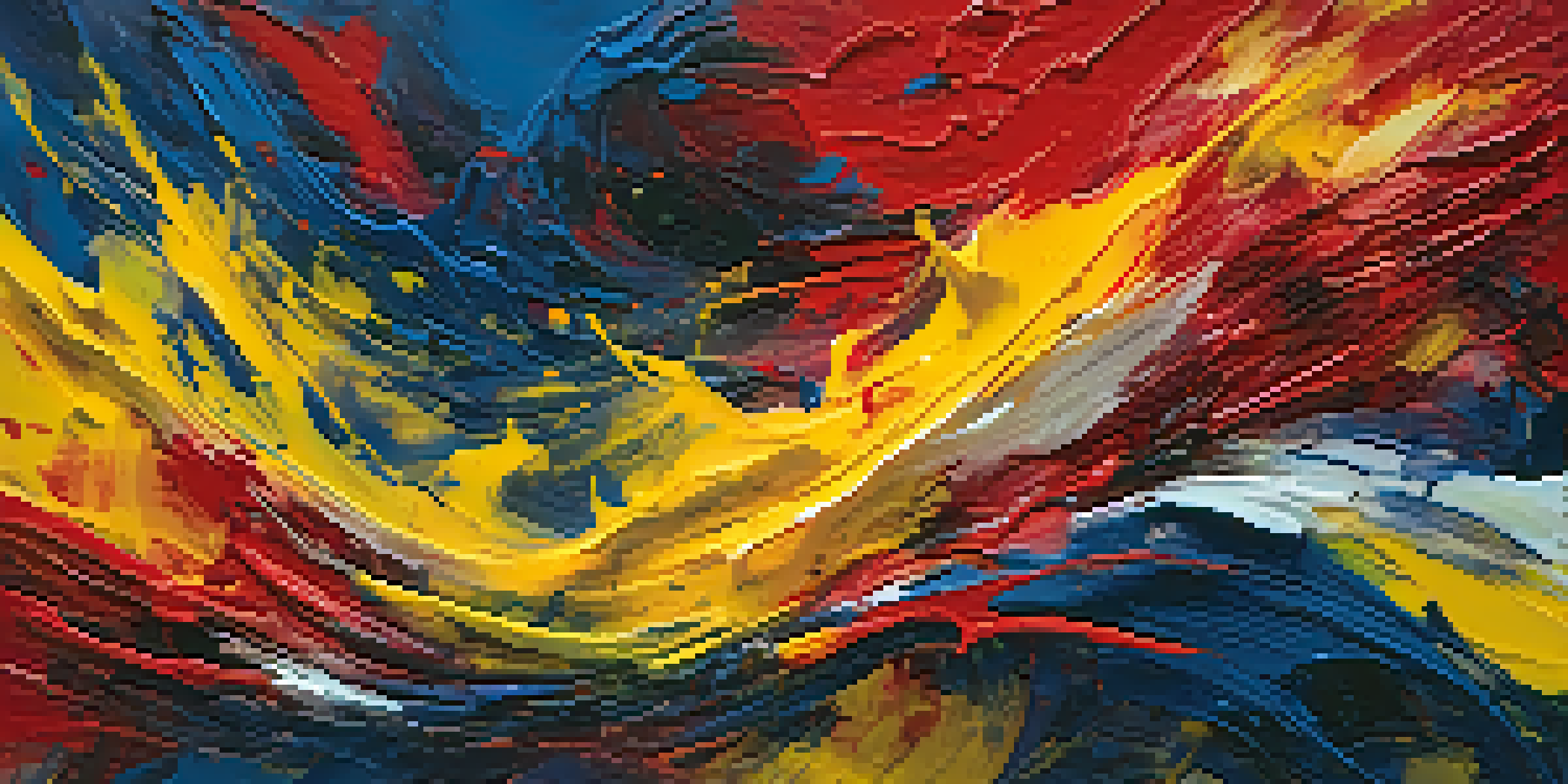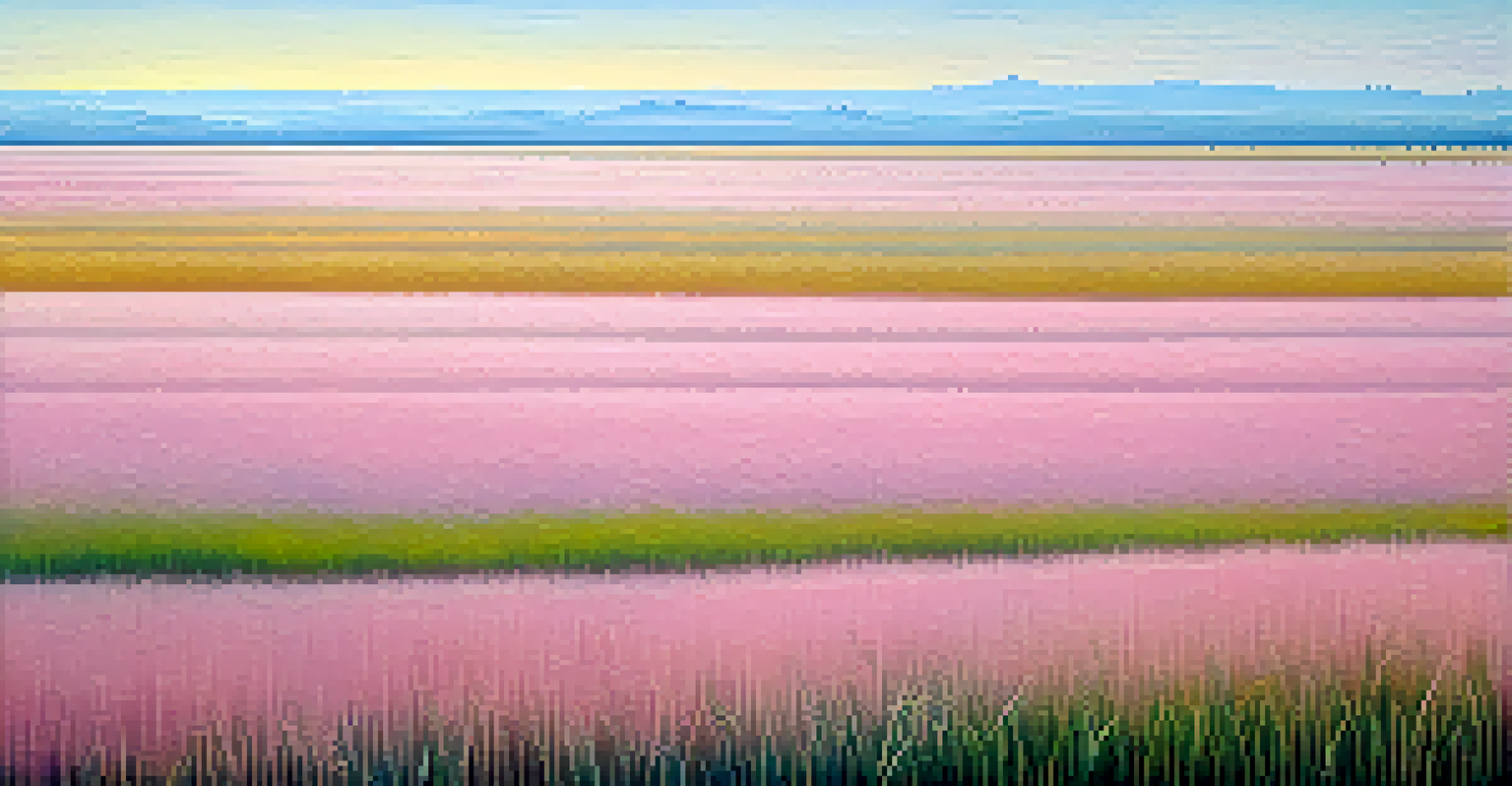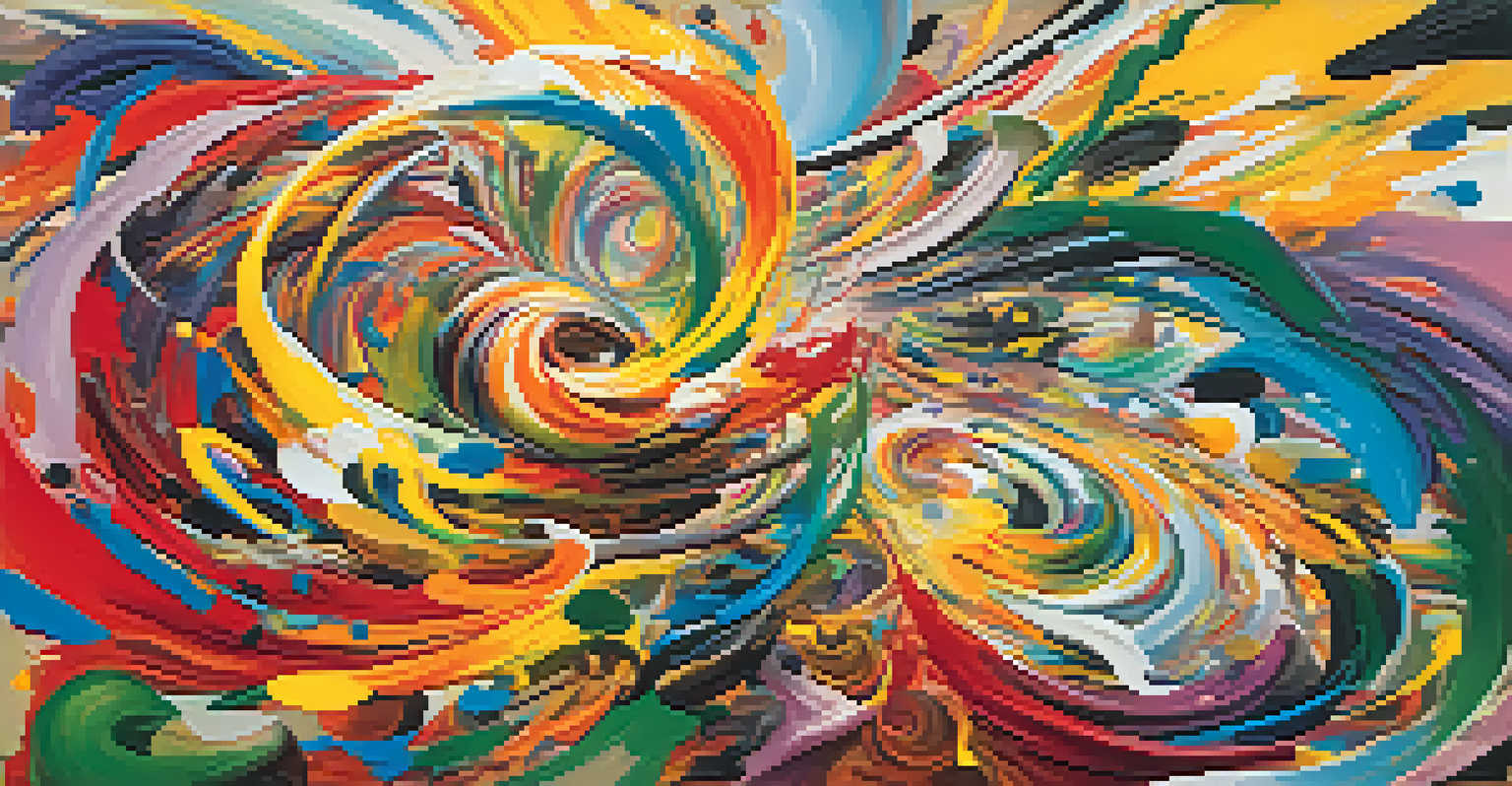Abstract Expressionism: A Revolutionary Art Movement

Understanding Abstract Expressionism and Its Origins
Abstract Expressionism emerged in the mid-20th century as a radical departure from traditional art forms. It blossomed in the post-World War II era, reflecting the tumultuous emotions and cultural shifts of the time. Artists sought to break free from conventional techniques, opting instead for spontaneous and emotional expression.
I am not a painter, I am an artist.
The movement was heavily influenced by European artists who fled to America during the war, bringing with them ideas of surrealism and abstraction. This blend of European and American influences gave rise to a unique style that prioritized individual expression over representational accuracy. Think of it as a new language in art, where feelings spoke louder than recognizable images.
Key figures like Jackson Pollock, Mark Rothko, and Willem de Kooning became the pioneers of this movement. Their works often feature bold colors, dynamic forms, and a sense of movement, reflecting the artists' internal struggles and existential themes. This approach allowed artists to communicate their innermost thoughts in a way that was raw and unfiltered.
The Techniques That Define Abstract Expressionism
At the heart of Abstract Expressionism lies a variety of innovative techniques that set it apart from traditional art. One of the most famous methods is 'action painting,' where artists use vigorous brushstrokes and spontaneous gestures to create dynamic compositions. Jackson Pollock's drip paintings are a prime example of this technique, where he famously dripped paint onto canvases laid on the ground.

Another significant technique is color field painting, which focuses on large expanses of color to evoke emotional responses. Artists like Mark Rothko used this to explore the psychological effects of color, often creating serene yet powerful compositions that invite viewers into a contemplative space. The simplicity of these works can be deceiving; they often convey deep emotional resonance.
Abstract Expressionism's Origins
Emerging in the post-World War II era, Abstract Expressionism reflects the emotional turbulence and cultural shifts of its time.
These techniques reflect a shift from the artist's hand to the experience of the viewer, making the act of viewing an essential part of the artwork. Rather than simply appreciating representational art, audiences are encouraged to engage with the emotional landscape of the piece. This interaction is what makes Abstract Expressionism both challenging and rewarding.
Key Artists Who Shaped the Movement
Several artists played pivotal roles in shaping Abstract Expressionism, each bringing their own unique voice to the movement. Jackson Pollock, with his revolutionary drip technique, became synonymous with the style, embodying the spontaneous and visceral nature of the art form. His works often resemble chaotic landscapes, inviting viewers to lose themselves in the layers of paint.
Color is the keyboard, the eyes are the harmonies, the soul is the piano with many strings.
Mark Rothko, on the other hand, took a different approach, focusing on the emotional power of color. His large canvases with soft, rectangular fields of color create an immersive experience, one that encourages introspection. Walking into a Rothko painting can feel like stepping into a meditative space, prompting viewers to reflect on their own emotions.
Willem de Kooning brought a more aggressive style to the movement, often blending abstraction with figuration. His famous series of 'Women' paintings illustrate a tension between abstraction and representation, capturing the complexities of femininity and identity. Each of these artists contributed to a dynamic dialogue that defined Abstract Expressionism.
The Influence of Surrealism on Abstract Expressionism
Surrealism, which emphasizes the unconscious mind and dream imagery, significantly influenced Abstract Expressionism. Many Abstract Expressionists were inspired by the avant-garde ideas of Surrealists like André Breton and Salvador Dalí. They adopted techniques such as automatism, where artists would create spontaneously without conscious thought, allowing the unconscious to guide their hands.
This embrace of the subconscious is evident in the chaotic and often dreamlike quality of many Abstract Expressionist works. The spontaneous nature of action painting, for instance, echoes the Surrealist desire to capture raw emotion and instinct. It's as if these artists were tapping into a deeper layer of reality, one that transcends the mundane.
Key Techniques and Artists
Innovative techniques like action painting and color field painting, pioneered by artists such as Jackson Pollock and Mark Rothko, define the movement's unique style.
As a result, Abstract Expressionism can be seen as a bridge between the emotional intensity of Romanticism and the philosophical inquiries of Surrealism. This amalgamation created a new narrative in art that challenged viewers to reconsider their perceptions of reality and the creative process itself.
The Role of New York City in the Movement's Rise
New York City served as the epicenter for Abstract Expressionism, fostering a vibrant art scene that attracted talent from around the world. After World War II, as artists sought refuge and inspiration, the city became a melting pot of creativity. It was here that the movement gained momentum, fueled by galleries, exhibitions, and a growing community of like-minded artists.
The emergence of institutions like the Museum of Modern Art (MoMA) and the Guggenheim helped elevate Abstract Expressionism to mainstream recognition. These venues showcased the works of leading artists, creating a platform for their revolutionary ideas. The city itself became a canvas, reflecting the energy and chaos that characterized the movement.
Moreover, the cultural shifts of the 1950s—such as the rise of jazz music and the beat generation—paralleled the raw, improvisational spirit of Abstract Expressionism. Artists were inspired not just by each other, but also by the dynamic environment of New York, which fostered collaboration and experimentation. This synergy solidified the city’s reputation as the heart of modern art.
Criticism and Controversy Surrounding the Movement
Despite its groundbreaking nature, Abstract Expressionism was not without its critics. Some argued that the movement was overly self-indulgent, prioritizing personal expression over technical skill. This led to debates about the value of art that seemed to lack clear representation or traditional craftsmanship, sparking conversations about what constitutes 'real' art.
Moreover, the movement faced accusations of elitism, particularly as it gained prominence in the art world. Critics contended that Abstract Expressionism was accessible only to a select few, leaving out diverse voices and styles that could enrich the conversation. This critique prompted a reevaluation of the movement's impact and its legacy in the broader art landscape.
Legacy and Influence Today
The movement's focus on individual expression and emotional authenticity continues to inspire contemporary artists and redefine the boundaries of art.
However, these discussions ultimately contributed to the evolution of contemporary art. The controversies surrounding Abstract Expressionism opened the door for new movements, such as Pop Art and Minimalism, which sought to challenge its principles. This ongoing dialogue reflects the dynamic nature of art, where each movement builds upon and reacts to its predecessors.
The Lasting Legacy of Abstract Expressionism
The impact of Abstract Expressionism continues to resonate in today's art world. Its emphasis on individual expression and emotional authenticity has inspired countless artists across various mediums. The movement paved the way for contemporary art by encouraging artists to explore their inner worlds and share their unique perspectives.
Moreover, Abstract Expressionism challenged the notion of what art could be, blurring the lines between painting, sculpture, and performance. This fluidity opened the door for diverse forms of artistic expression, leading to the rise of movements like installation art and conceptual art. Artists now have the freedom to experiment with materials and methods, reflecting the spirit of innovation that Abstract Expressionism championed.

In essence, Abstract Expressionism not only transformed the art world of its time but also laid the groundwork for future generations of artists. Its legacy is a testament to the power of art as a means of self-expression, inviting all of us to engage with our emotions and the world around us in new and profound ways.